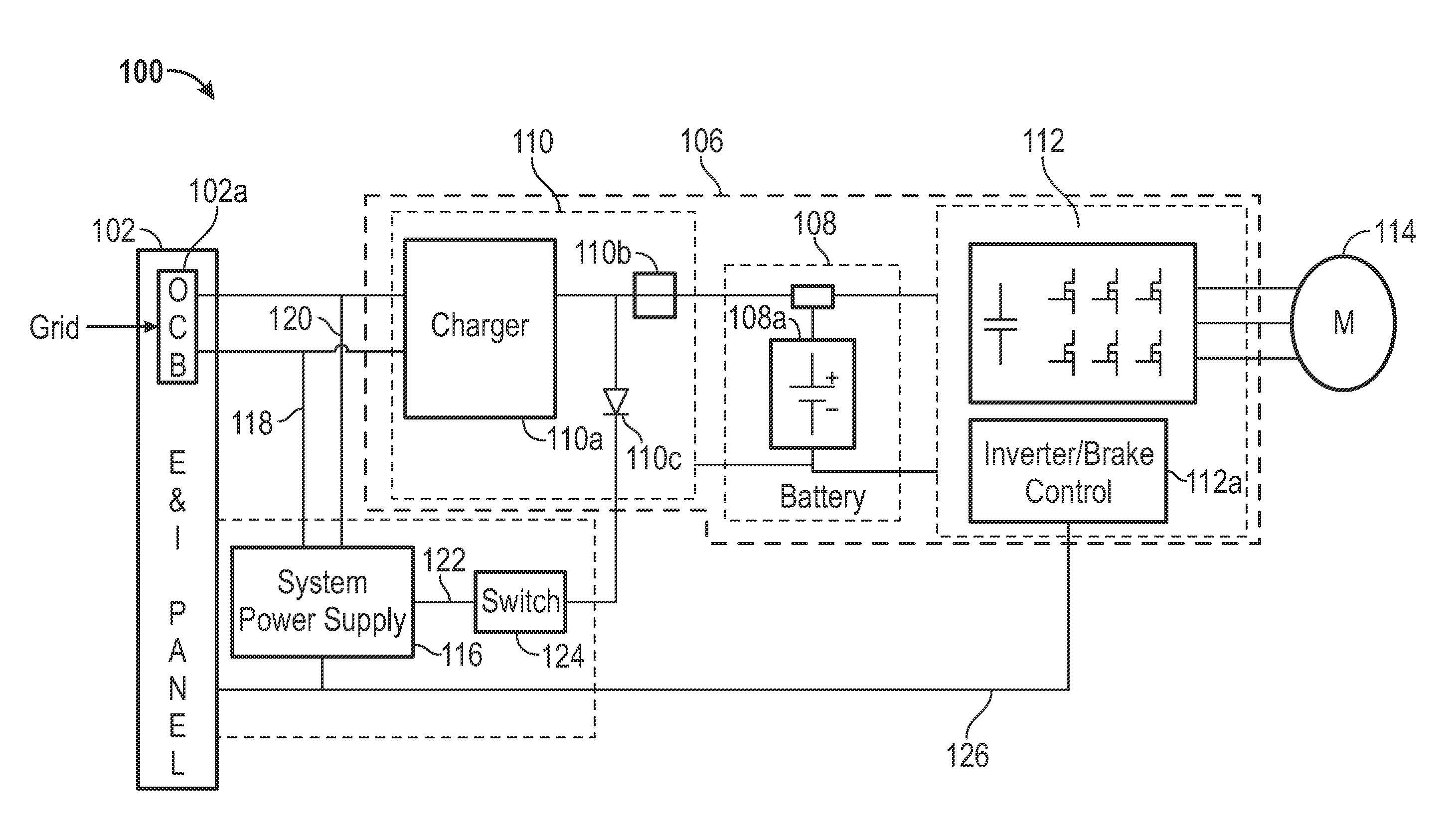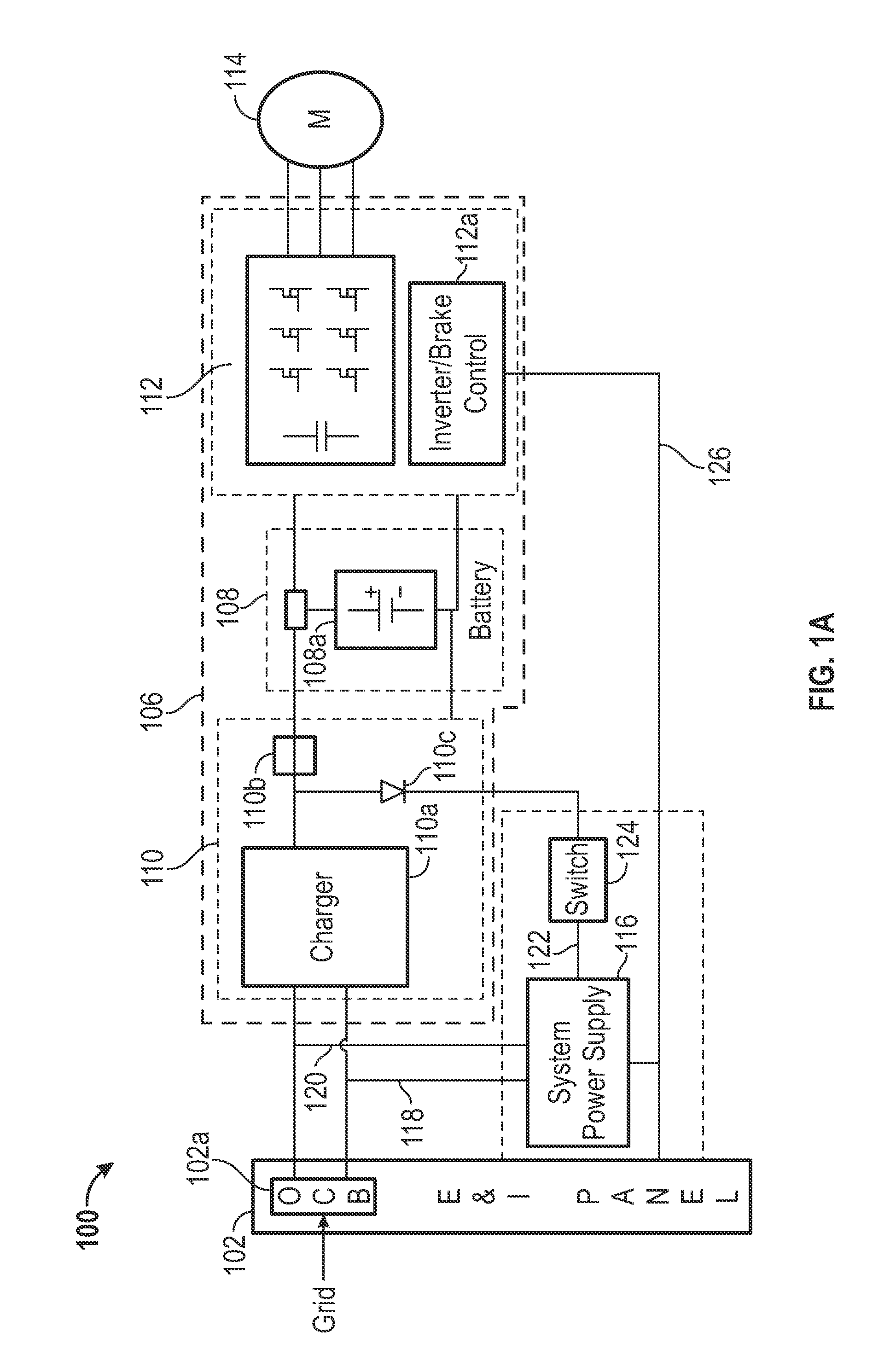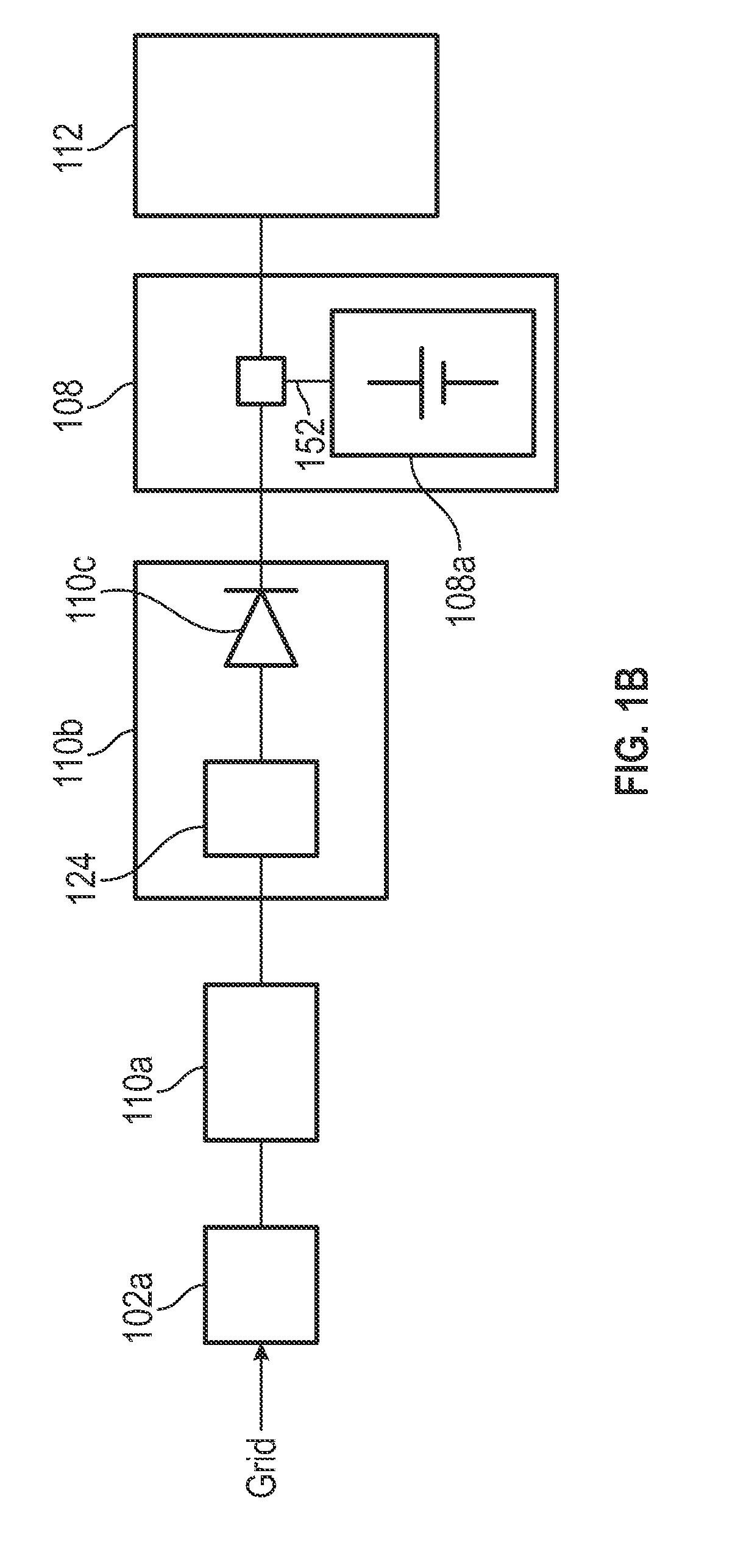Elevator backup power supply
a technology for power supply and electric lifter, applied in the direction of emergency power supply arrangement, electric lifter, electrical apparatus, etc., can solve the problems of reducing reliability and running on batteries
- Summary
- Abstract
- Description
- Claims
- Application Information
AI Technical Summary
Benefits of technology
Problems solved by technology
Method used
Image
Examples
Embodiment Construction
[0011]Exemplary embodiments of apparatuses, systems and methods are described for safely and effectively distributing power. In some embodiments, power to, e.g., an elevator may be provided from one or more sources. The one or more sources may include a grid and a battery. Embodiments may be used to selectively connect or disconnect power to an elevator. A select coupling of power may help to ensure safety of personnel when, e.g., servicing, maintaining, or repairing the elevator.
[0012]In some embodiments, efficient and cost effective solutions may be provided for interfacing a controller to a battery. In some embodiments, the controller might not be entirely reliant on the battery and might not need a DC / AC converter to be powered from the battery. In some embodiments, reliability may be improved or enhanced by avoiding a single point failure at the battery.
[0013]It is noted that various connections are set forth between elements in the following description and in the drawings (th...
PUM
 Login to View More
Login to View More Abstract
Description
Claims
Application Information
 Login to View More
Login to View More - R&D
- Intellectual Property
- Life Sciences
- Materials
- Tech Scout
- Unparalleled Data Quality
- Higher Quality Content
- 60% Fewer Hallucinations
Browse by: Latest US Patents, China's latest patents, Technical Efficacy Thesaurus, Application Domain, Technology Topic, Popular Technical Reports.
© 2025 PatSnap. All rights reserved.Legal|Privacy policy|Modern Slavery Act Transparency Statement|Sitemap|About US| Contact US: help@patsnap.com



